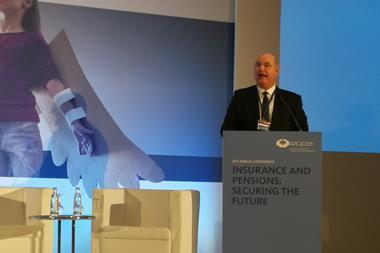Opinions on IORP II implementation that were released by EIOPA this week have refuelled fears among the European pension industry that pension funds could yet end up facing prudential requirements.
The opinions are documents to help national pension supervisors in the implementation of the EU occupational pension funds directive, which set several new minimum standards for occupational pension funds, including new rules for governance and risk assessment.
Commenting on the opinions, PensionsEurope said that although they were not binding, EIOPA “puts pressure on national supervisors by providing detailed guidance, monitoring, and following up on implementation”.
“We fear that this will lead to supervisory authorities following the opinions, even when this would not be adequate for their national contexts,” the European association said.
“The result would be that prudential requirements that were discarded as inappropriate during the discussions on IORP II would be introduced through the back door.”
Many in the European pensions industry were relieved when controversial proposals for a holistic balance sheet framework were dropped during negotiations on the new IORP II directive a few years ago, but concerns arose that solvency capital requirements for pension funds could yet still see the light of day after EIOPA proposed the introduction of a harmonised risk assessment for occupational pension funds, known as ‘the common framework’.

“The common framework was rejected in the debate on IORP II and should not be introduced through the back door, leading to unnecessary cost at the expense of pension fund members,” said Janwillem Bouma, chair of PensionsEurope.
“PensionsEurope does not see any benefit from EIOPA continuing to work on the common framework and is completely against its application in this or any other context”.
One of the opinions published by EIOPA yesterday – there are four – is “on the practical implementation of the common framework for risk assessment and transparency for IORPs”.
According to EIOPA, it encourages national supervisors “to make IORPs aware of the availability of the common framework as a tool for risk assessment and to stand ready to support pension funds in the application of the tool”.
Upon the release of the opinions, Gabriel Bernardino, chairman of EIOPA, said: “The IORP II Directive has profound implications for the governance and risk management of occupational pension funds in Europe.
“In this context, the EIOPA opinions lay the foundation for the future supervisory convergence of pension funds’ own-risk assessment to ensure sound risk management for the better protection of members and beneficiaries and alignment with society’s sustainability goals.”
Inappropriate one-size-fits all approach
EIOPA’s other three opinions are about the use of governance and risk assessment documents in the supervision of IORPs, the supervision of the management of operational risks faced by pension funds, and the supervision of the management of environmental, social and corporate governance (ESG) risks faced by IORPs. It made specific critical remarks about the opinion on the latter (see separate article).
At a general level, PensionsEurope said the opinions do not recognise the minimum harmonisation of the IORP II directive, which gives national governments considerable leeway as to how to embed the new rules in domestic legislation and does not include any delegated acts.
Bouma said: “EIOPA should keep in mind that the IORP landscape is very diverse and national supervisors need latitude to implement the directive in their domestic context.
“The IORP II Directive is clear in this regard: it is not appropriate to adopt a ‘one-size-fits-all’ approach to IORPs. While appropriate supervision is key for secure occupational retirement provision, we believe that national supervisory authorities are best placed to decide on the appropriate risk-management framework.”
Approached for comment, a spokesperson for EIOPA referred to Bernardino’s comments, adding that “EIOPA continuously engages in dialogue with all its stakeholders also with PensionsEurope, [which is] also represented in EIOPA’s Occupational Pensions Stakeholder Group.”
EIOPA considered and took into account feedback in various forms, the spokesperson continued, but ultimate decisions were taken independently by EIOPA’s board of supervisors, which in this case unanimously adopted all four of EIOPA’s opinions.
In the opinions EIOPA states that national supervisors “may take into account the national specificities of the IORP sector to determine the requirements necessary for implementing this opinion considering a risk-based and proportionate approach”.
EIOPA’s opinion on the common framework states that national supervisors and IORPs may use its principles and technical specifications on a voluntary basis.
This article was updated to add references from the opinions themselves and comments from the EIOPA spokesperson











No comments yet